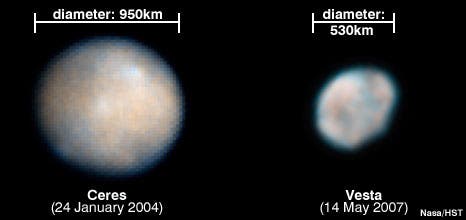There are millions of asteroids in our solar system. Be them the size of France or a small bus, these space rocks can be found through out the solar system, and have recently become the subject of entrepreneurial discussions, since even a single medium-sized asteroid is thought to carry trillions of dollars worth of rare materials, like platinum and rare earth minerals. While our current understanding of modern day asteroids is rather slim, that of ancient asteroids is even poorer and controversial.
Most of the asteroids in our solar system have been around of billions of years, but how were they shaped to their current form today and where did they come from? Phil Bland, a planetary scientist at Curtin University in Perth, Australia is trying his best to fit at least a few bits of the giant puzzle together, and is keen on studying early asteroids.
Scientists are currently bewildered by seemingly contradictory formation models. For instance, meteorites – chunks of asteroids – that crashed into Earth show textural signs of water flowing through them. Chemical analysis however suggests that no water had flowed through them, since the chemical make-up is constant. So, the asteroid insides had and didn’t have at the same time water flowing through them. Quite the paradox, and while most theories consider ancient asteroids as being rock, Bland has taken a different approach – he believes these were initially mud-like, resembling more “cowpats” than rock.

Bland and colleagues first considered a couple of model primordial asteroids, 100 kilometers in diamater, made out of unconsolidated mixtures of coarse and fine particles, plus ice. Numerical simulations were ran and over the course of millions of years heat produced by the decay of radioactive elements began melting ice deeper inside the asteroid. Like a boiling pot of water, the ancient asteroid interior’s started churning with strong convective motions. This continued for millions of years, again, until the radioactivity decayed – long enough to mix everything so thoroughly that the overall chemical make-up ends up constant, which would explain the paradox.
“If you say the system was melting and convecting because it was mud, then it becomes a more tractable problem,” says Steven Hauck, a planetary scientist at Case Western Reserve University in Cleveland, Ohio.
This is a highly difficult to prove theory, however. Bland hopes that once with the deployment of NASA’s Dawn mission in 2015 towards the largest asteroid in our solar system – the 1,000 kilometer wide Ceres asteroid – that evidence which might prove or disprove his simulations might surface.
The ancient mud-asteroid theory was presented in the journal Nature.






